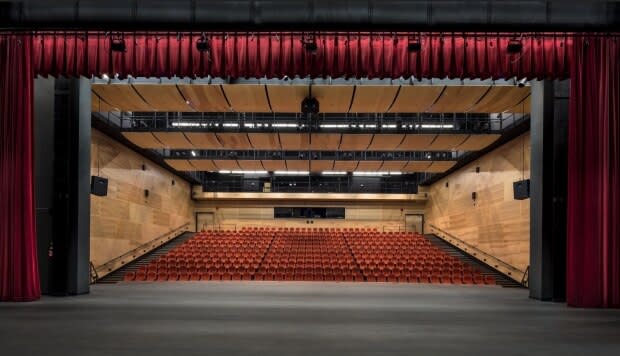Tired of livestreams? Community arts groups across B.C. are bringing back in-person performances
Community arts groups across British Columbia are plotting the return of live events this fall, putting together scaled-back, more intimate performances in order to meet COVID-19 safety guidelines.
In Oliver, B.C., the Frank Venables Theatre is launching a new local artists series featuring performers of all backgrounds showcasing their talents to a nearly empty auditorium.
"We will have 50 people in our 400-seat theatre, so it will be a socially distanced, intimate evening of art," said theatre manager Leah Foreman.
"We knew that artists in the area were struggling with less work, so we wanted to do something for them as well as revitalize theatre and do something with our space in a safe way."

The series will feature dancers, comedians, poets and more, performing a set of no more than 60 minutes over the autumn months. Foreman said she anticipates once the summer fades, people will be looking for new ways to get out of the house while still following the province's health guidelines.
"I know there's a lot of livestreaming out there and things to do on the internet, but that live experience just isn't there," she said. "I think we need to get back to that."
Fewer faces in big spaces
On Vancouver Island, Sidney's Mary Winspear Theatre is already experimenting with booking musicians for a four-night engagement in order to reach a larger audience while following the 50-person maximum rules set out by the province.
Up island in the Comox Valley, Courtenay's Sid Williams Theatre is preparing for a "hybrid season" that will livestream events on stage to a paying audience, while also welcoming a limited number of in-person patrons.
"We have lots of space to play with so we can use Dr. [Bonnie] Henry's motto of 'few faces in big spaces,'" said the 500-seat theatre's manager, Deborah Renz.
In the province's central Interior, the Prince George Symphony Orchestra is applying that mantra to its own musicians, scaling back from a full orchestra to a smaller chamber series of two to five performers in order to reduce the number of people on stage at one time.
The symphony is also moving out of their regular auditorium and will instead be playing more frequent, shorter sets in the ballroom of a local hotel.
"One of the concerns was getting a space that's large enough to accommodate 50 audience members safely but still be [intimate] enough for a small ensemble," said conductor Michael Hall. "We feel this can be managed really well."
Profits unlikely
Hall said he will conduct four performances over the course of a single weekend, allowing for an overall audience of 200 — nearly matching the numbers at an average full-length show under regular circumstances.
That, paired with fewer musicians to pay, means the orchestra should be able to break even, Hall said, although that isn't his primary concern.
"What's most important to us is just how can we get live music back into the community," he said. "It's been such a dry spell for so many people."
Renz has no expectations of making money, given how much smaller her schedule is going to be.
"In our busy season we have five or more events a week, and we'll be considering ourselves doing well if we have a couple a week," she said.
Likewise, Foreman said she is applying for grants to help keep things afloat, but her best hope is to break even.
"We're not doing this project to make a profit," she said. "We're doing this to support the community and entertain some people."

